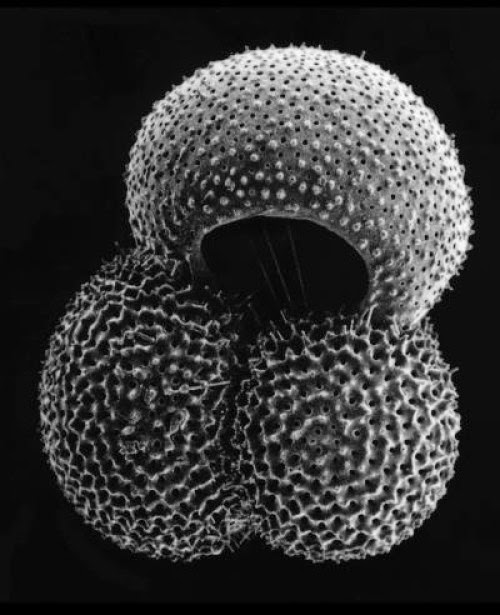
New research in Nature Communications showing how tiny creatures drifted across the ocean before falling to the seafloor and being fossilised has the potential to improve our understanding of past climates.
The research published in Nature Communications has identified which planktic foraminifera gathered up in core samples from the ocean floor, drifted thousands of kilometres and which species barely moved at all.
The research will help scientists to more accurate distinguish which fossils most accurately reflect ocean and temperature states in the locaiton where they were found.
“This research will help scientists improve the study of past climates because they will be able to look at a species of foraminifera and the core location to very quickly get a sense of how site-specific that particular proxy measure is,” said Dr Van Sebille, lead-author of the study and a climate scientist at the ARC Centre of Excellence for Climate System Science at UNSW Australia.
“In a way it will give us a good indication of whether the creature we are looking at to get our past-temperature estimates was a bit of a globetrotter or a stay at home type.”
For many decades, deriving past temperatures from the shells of creatures living tens of thousands of years ago has been key to understanding climates of the past.
However, interpreting the records has never been easy. This is the reason that many studies have very large margins of error when they use ocean sediments as a way of establishing past temperatures. It also explains why there is a greater focus on the trend of these results over the actual temperature.
“The older the proxy, the wider the margin of error. This is because ocean currents can change, tectonic plates move and there is even variation in which level of the ocean various plankton can be found,” said Dr Scussolini, a contributing author and climate scientist at VU University, Amsterdam.
“This research allows us for the first time to grasp the margins of error caused by drift and also opens an entirely new dimension for the interpretation of the deep-sea climate data.”
The international team used state-of-the-art computer models and analysis on fossil shells to investigate the impact of oceanic drift. In extreme cases the variation in temperature between where the fossilised shell was found and where it came from could be up to 3°C.
In other cases for specific plankton and in areas of the ocean where currents were particularly slow, the variation in temperature was negligible.
As a result, the team is now working on creating a tool, so fellow researchers can easily estimate how large the impact of drift for the location is likely to be. This tool will also be extended to other species of plankton.
“Our results highlight the importance of the ocean currents in transporting anything that floats,” said Dr Van Sebille.
“By picking apart this variation we can add another level of certainty to estimates of past temperatures, opening a door that may help us discover what future climate change may bring to our planet.”
Reference:
Erik van Sebille, Paolo Scussolini, Jonathan V. Durgadoo, Frank J. C. Peeters, Arne Biastoch, Wilbert Weijer, Chris Turney, Claire B. Paris, Rainer Zahn. Ocean currents generate large footprints in marine palaeoclimate proxies. Nature Communications, 2015; 6: 6521 DOI: 10.1038/ncomms7521
Note: The above story is based on materials provided by University of New South Wales.










